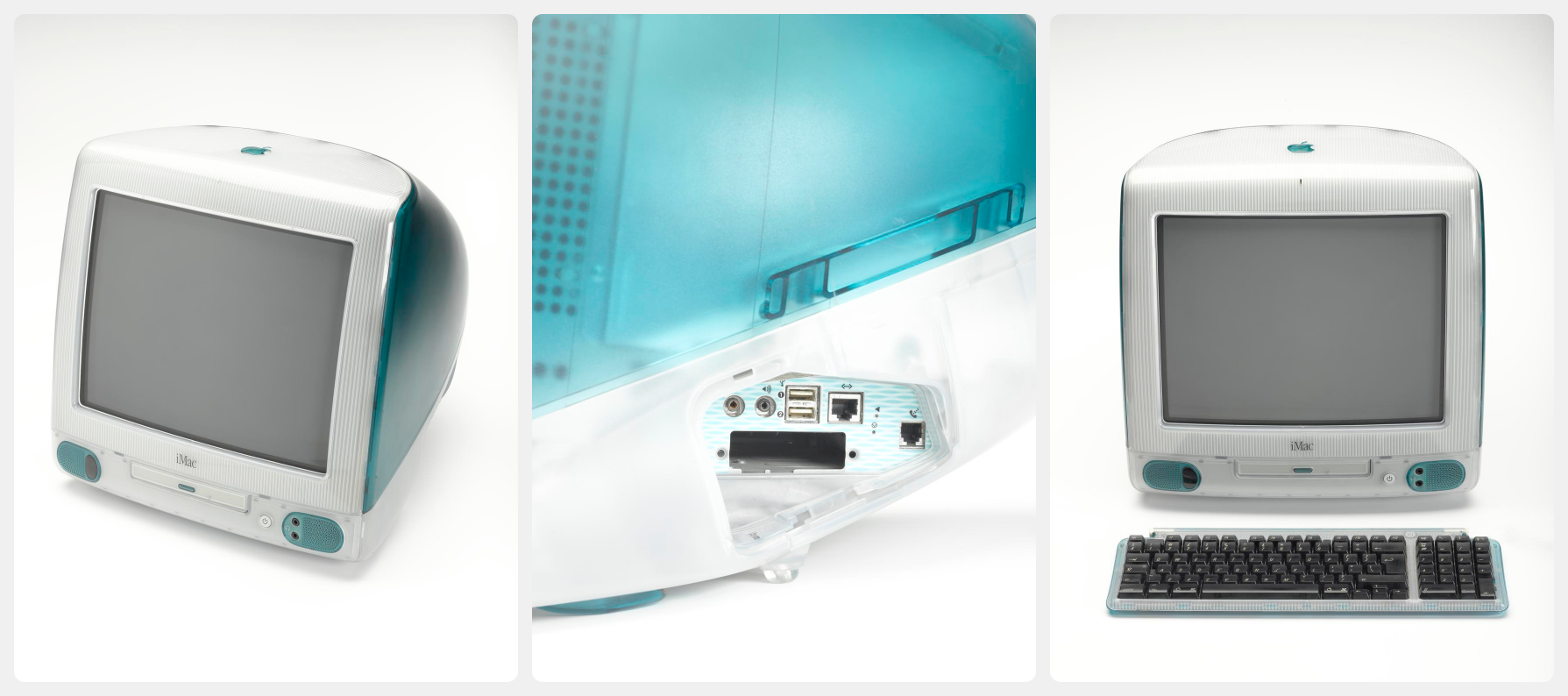Bondi Blue iMac G3
I have a long list of Apple products that I believe are unique, desirable, or just unusual waiting to be proudly displayed in my Apple museum. Recently I found myself endlessly browsing eBay (again) searching for something on the list and I came across an iMac in the original color: Bondi Blue. I have a fondness for blue and green Apple products like the iBook, Power Mac G3, and this iMac. I clicked Buy It Now not knowing that I would soon have a delightful email exchange with the owner.
The iMac belongs in the museum because it marks the beginning of Apple’s transition from a boring, confusing, beige 1990s into an artistic, colorful, opinionated 2000s. Steve Jobs had returned to Apple, eliminated most of the product line, elevated Jony Ive, and released the iMac.
I sold many iMacs when I worked at Computerware, a local Apple retail store before Apple had official stores. By the time I was employed there Apple was selling models with new colors (including Blue Dalmation and Flower Power) and FireWire ports for connecting digital video cameras.
The iMac was notable in the computer industry for many reasons:
- Prominent Apple ports were removed breaking compatibility with old keyboards and mice. USB and the ability to plug and unplug peripherals without restarting was the future.
- There was no disk drive. If you wanted to move a file to another computer you were expected to use the internet.
- Plug in power, plug in the keyboard and mouse, and plug in the modem. Simplicity was part of the Jeff Goldblum ad campaign showing off how easy it was to set up an iMac.
- Pick it up with a handle. Apple brought back the mentality that a computer should be approached not as a mysterious, heavy box, but as something you could simply pick up and move.

Below is the culmination of the email exchange I had with the iMac’s owner.
This iMac is pretty early in the build cycle. I think it’s an early Rev. B model. It was made early November 1998. I sold a bunch of Bondi iMacs when they came out. The most memorable aspect of being an Apple Reseller in the 1990s was frequently going to Macworld Keynotes (mostly in New York plus one in Boston). The best was in 1999 for the introduction of WiFi and the iBook. The single best computer theater I saw was when Phil Shiller jumped from a window above the stage to a waiting Steve Jobs to show the iBook was not connected to any wires.
He was at the event when Phil Schiller jumped to show that the iBook’s internet connection was wireless using Apple’s AirPort card. Incredible.
I am a computer industry living fossil. I began writing assembler language small subroutines in 1974 on punch cards. Short 10-15 lines of code subs to do a very specific individual task. Assembler was a very compact language. I worked as a Cobol programmer for about a dozen years. I ran large scale projects. My first encounter with Apple was 1983 testing the Lisa. I was invited to Apple in 1986 or 87 to take a look at a new technology they were working on. After being led deep inside a building we emerged into a lab and were shown what was to be called QuickTime. Exciting stuff. In my early corporate days around 1981 I sat in the back of the room for a demo conducted by Phil Estridge of IBM (he and his team died when a Delta jet went down in a storm on approach to Dallas. IBM never recovered from that loss). He was demonstrating what was to become the IBM PC. He had the team from Microsoft showing off DOS… Bill Gates and Paul Allen. Who knew then what was to be.
I’ve never even seen a Lisa and I had no idea QuickTime development started in the late 1980s!
We were at the introduction of the Newton. The wife was at the intro of Apple’s first laptop. We went to the intro of the IIfx. The list goes on.
I have a Newton Messagepad H1000 and an eMate 300 in the museum. Clearly I must find more “fossils” out there to hear old Apple stories and purchase their relics.